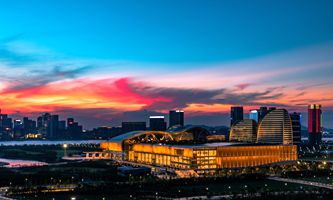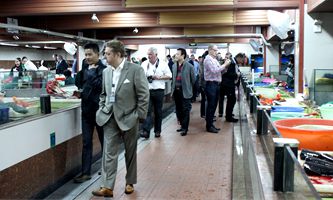Xiaoshan Economic and Technological Development Zone
Xiaoshan Economic and Technological Development Zone (XETZ) was established in May 1990 and three years later was approved as an economic and technological development zone at the national level by the State Council. It is among the first group of national development zones and a cluster with most Japanese and Taiwan investment in Zhejiang province. The area of XETZ is 110 square kilometers with four areas under its jurisdiction.
XETZ enjoys an advantageous location with convenient transportation. Xiaoshan district, where the zone is located, belongs to the Yangtze River delta area that has the most active private economy. The district tops other counties (cities or districts) for its comprehensive strength and was awarded as China’s Top 10 Counties for successive years.
XETZ is less than 10 kilometers away from Xiaoshan International Airport and is an important region for Hangzhou’s cross-river development and Zhejiang province’s big platform construction.
In 2016, the added value of the industrial enterprises above designated size in XETZ was 10.28 billion yuan ($1.60 billion), up 10 percent compared to the previous year. In the same year, the zone’s added value of service industry above designated size was 3.4 billion yuan with a year-on-year increase of 13.1 percent, while its operating revenue grew 19.7 percent to 53 billion yuan. Its retail sales of consumer goods above quota were 4.46 billion yuan, rising 10.9 percent. Its main operating revenue of information economy above quota grew 21.5 percent, with added value up 26.6 percent.
XETZ achieved fiscal revenue of 4.95 billion yuan in 2016, accounting for 18.5 percent of the district’s total. This year, its local fiscal revenue is 2.64 billion yuan, up 4.5 percent.
In 2016, the zone had good performance in investment promotion, as well as enterprises transformation, environment improvement and the security of G20 Hangzhou Summit.
The information port town and robot town became the main stage and new engines for XETZ’s integration of informatization and industrialization, and also a “silicon valley” for Hangzhou’s internet economy and a new space for the city’s mass entrepreneurship.
In 2016, XETZ introduced 28 foreign-invested projects, with paid-in foreign investment of $400 million, and introduced 16 domestic-invested projects, with paid-in investment of 3.54 billion.
Taking the opportunity of B20 Hangzhou Summit, the zone carried out various methods of business promotion to reach the summit’s attendees. A group of key projects, including the key EV parts project of German ZF Group and the light truck engine project of China National Heavy Duty Truck Group, sped up their process to settle in the zone.
XETZ has participated in a series of business promotion activities such as the 2016 Hangzhou Investment Conference for Overseas Chinese Entrepreneurs and the World Hangzhou Entrepreneurs Convention, and signed contracts of a group of key projects.
The registered capital of Xiaoshan Innovation Polis’ Lujiazui project increased to 2.5 billion yuan. The Wellington bilingual school is under construction. The preliminary work of an international community’s first phase, including designs of plan and construction drawing has been completed. The southward extension project of Xiangzhang Road was completed and opened to traffic. Meanwhile, the south gate of Xiaoshan Innovation Polis also opened. Projects such as the financing project of Yulon Motor Co Ltd and CCS Supply Chain Management Corp, was introduced to the zone.
With the leading backbone enterprises and hi-tech enterprises in the zone as the key service targets, XETZ has opened a green channel to provide enterprises listing services and promote enterprises’ equity division reform and listing at the National Equities Exchange and Quotation (NEEQ) or the “New Third Board”. To date, four enterprises have been listed at the new third board, and other nine are planning to get listed. A total of 19 enterprises have completed the equity reform.




